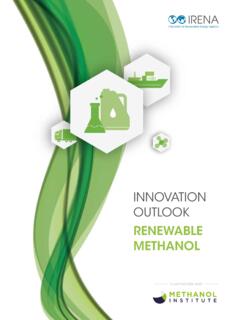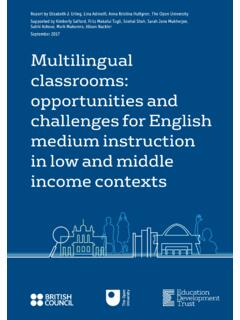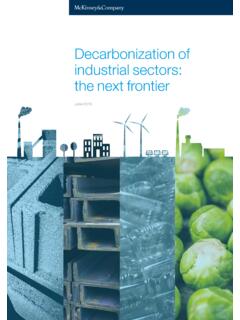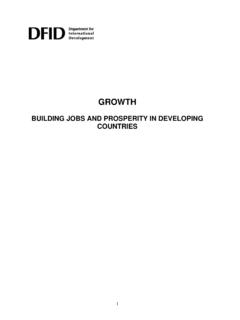Transcription of COVID-19 in an Urban World - United Nations
1 Policy Brief: COVID-19 in an Urban WorldJULY 20202 POLICY BRIEF: COVID-19 IN AN Urban WORLDThe remarkable growth of cities in recent dec-ades has intensified a number of humanity s most pressing challenges. It has also presented many of our greatest opportunities to pro-tect people, prosperity and planet. COVID-19 has laid bare and indeed heightened both these challenges and these opportunities. With an estimated 90 percent of all reported COVID-19 cases,1 Urban areas have become the epicentre of the pandemic. The size of their pop-ulations and their high level of global and local interconnectivity make them particularly vulnera-ble to the spread of the virus. On the other hand, there is no evidence to suggest that density per se correlates to higher virus transmission.
2 Cities can manage this crisis and emerge as the hubs of energy, resilience and innovation that make them such vibrant and appealing places for many to live. But this will take conscious policy choices, as this policy brief will show, particularly with respect to inequalities, local capacities and a green, inclusive recovery. In the near term, for many cities, the COVID-19 health crisis has expanded to a crisis of Urban access, Urban equity, Urban finance, safety, 1 United Nations Human Settlements Programme (UN-Habitat), Opinion: COVID-19 demonstrates urgent need for cities to prepare for pan-demics , 15 June 2020, available at Semeh Wahba and others, Cities are on the front lines of COVID-19 , 12 May 2020, available at United Nations World Tourism Organization (UNWTO), International Tourist Numbers could Fall 60 80% in 2020 , 7 May 2020, available at , public services, infrastructure and transport, all of which are disproportion-ally affecting the most vulnerable in society.
3 COVID-19 highlights the critical role local governments play as front-line responders in crisis response, recovery and rebuilding. They play a leading role in service delivery, economic development and infrastructure investments. However, business closures, job losses, and other economic impacts have led to declining tax revenues during the crisis, placing significant financial strain on many local governments. Estimates from the World Bank and UN entities suggest that local governments may on aver-age lose 15 per cent to 25 per cent in revenues in Cities with less diversified economic bases have been hit especially hard. Cities with a revenue base reliant primarily on tourism, for example, may see acute economic shrinkage as earnings from international tourism are esti-mated to decline by as much as 80 per cent in 2020, accompanied by the loss of 120 million If not addressed, the financial crises that cities may bear could jeopardise crucial Urban infrastructure investments, lead to cuts in public services, and undermine broader sustainable Urban development summaryPOLICY BRIEF: COVID-19 IN AN Urban World 3 COVID-19 shutdown measures in Urban areas have had economic impacts far beyond their boundaries.
4 Urban economies account for approximately 80 per cent of global Hours worked across all countries and regions are estimated to have fallen by 14 percent in the second quarter of 2020 relative to the last quarter of 2019, which is equivalent to a loss of 400 million full-time Globally, the effects have been especially severe in the informal sector, which represents 90 per cent and 67 per cent of total employment in low and middle-income countries In the first month of the crisis, on average informal workers worldwide lost as much as 60 per cent of their earnings. In Africa and Latin America this figure was nearly 80 per This has had devastating impacts for women. Globally women are overrepresented in the informal economy as well as in the hardest hit sectors, such as tourism, hospitality, and inequalities, including where in a city a person lives and works and a person s gender and age, can lead to the pandemic having a disproportional impact on groups that were already in a situation of greater Meanwhile, there is evidence that 4 World Bank, Urban Development , 20 April 2020, available at International Labour Organization (ILO), ILO Monitor: COVID-19 and the World of Work, fifth edition, 30 June ILO, COVID-19 crisis and the informal economy.
5 Immediate responses and policy challenges , available at @ed_protect/@ United Nations , Policy Brief: The World of Work and COVID-19 , available at Organization for Economic Cooperation (OECD), OECD Policy Responses to Coronavirus ( COVID-19 ) , 13 May 2020, available at ; and Jillian Du, Robert King and Radha Chanchani, Tackling Inequality in Cities is Essential for Fighting COVID-19 , 14 April 2020, available at United Nations Office on Drugs and Crime (UNODC), Research Brief: The impact of COVID-19 on Organized crime , avialbale at Gaurav Bhardwaj and others, Cities, Crowding, and the Coronavirus: Predicting Contagion Risk Hotspots, Washington, DC: World Bank, 2020, available at UN-Habitat, UN-Habitat Guidance on COVID-19 and Public Space , June 2020, available at United Nations , Policy Brief.
6 The World of Work and COVID-19 , available at Gaurav Bhardwaj and others, Cities, Office of the United Nations High Commissioner for Human Rights (OHCHR), COVID-19 Guidance Note: Protecting residents of informal settlements , 23 April 2020, available at Progress towards the Sustainable Development Goals: Report of the Secretary-General, available at COVID-19 may be more challenging in Urban areas with high levels of crime and vio-lence,9 poor infrastructure and housing,10 and/or weak local governance11 with ill-equipped or under-resourced frontline workers. Limited access to healthcare,12 basic services13 and adequate housing and/or public space can further undermine COVID-19 safely adhere to coronavirus physical dis-tancing and hygiene guidelines, everyone needs access to adequate Yet the global Urban housing crisis forces around 1 bil-lion people or 24 percent of the World s Urban population to reside in slums and informal settlements,15 exacerbating the impact of the pandemic.
7 With limited or no income during lockdowns, the Urban poor in all countries face risk of eviction, while overcrowding in low-quality housing increases the risk of rapid transmission. Housing considerations may also be increasing the vulnerability of women to violence and abuse. Since the pandemic began, levels of gender-based violence have increased at alarming levels in all regions. With mobility restricted, unemployment and poverty rising, the ability of women to flee an abusive situation has become even more constrained. 4 POLICY BRIEF: COVID-19 IN AN Urban WORLDP ublic transport systems around the World have seen ridership and revenue plummet and have been forced to cut services. This is a worrisome trend considering that before the pandemic, only around half of the World s Urban population had convenient access to public Declining ridership due to COVID-19 if not halted and reversed could jeopardize the transition to safe and sustain-able transport for all, and constrain efforts to tackle climate change and air pollution.
8 Several cities have encouraged biking and walking as safe alternatives to public transport during the COVID-19 outbreak, enabling new user groups to take advantage of the affordability and health benefits of these forms of transport. The success of these initiatives may encourage city governments to convert more roads for similar purposes, further improving mobility and There is also an opportunity in this moment to relook at public transport from a gen-der perspective, taking into account protection considerations, where main arteries and routes flow and how these factors impact time spent moving between schools, care facilities, markets and other essential facilities that are often on the periphery rather than on main transport new scientific studies suggest that poor air quality is correlated with higher COVID-19 mortality rates.
9 For example, a small increase in fine particulate matter has been associated with an 8 percent increase and up to per cent increase in death rates in the US and the Netherlands, New evidence also points to impacts on pregnant women and newborn babies as well as maternal mortality, 16 Progress towards the Sustainable Development Goals: Report of the Secretary-General, available at UN-Women, COVID-19 and Ensuring Safe Cities and Safe Public Spaces for Women and Girls, 2020, p. Wu and others, Exposure to air pollution and COVID-19 mortality in the United States: A nationwide cross-sectional study , medRxiv ; and Cole and others, Air Pollution Exposure and COVID-19 , IZA DP No. 13367, available at Christopher Flavelle, Climate Change Tied to Pregnancy Risks, Affecting Black Mothers Most , New York Times, 18 June 2020, available at among populations already facing socio-economic stress due to While pollution and Greenhouse Gas Emissions have fallen sharply during the pandemic when countries halted their economies to contain the spread of the virus, these environmental gains are expected to be temporary if economies reopen without policies in place that prevent air pollution and promote decarbonization.
10 Meanwhile, the current pandemic is acceler-ating trends such as digitalization, shifts to remote work, and virtual delivery of essential services. This transition to digital life has cre-ated an uncertain future for city infrastructure and buildings, as demand for office space and housing could subsequently decline. Urban seg-regation and migration could also accelerate as people at higher income levels look for new ways of living and working outside the city in response to the pandemic. If associated with an increase in Urban sprawl and income, racial and gender inequalities, migration away from cities could undermine vital efforts to achieve the Sustainable Development Goals (SDGs), protect biodiversity and address the climate is an urgent need to rethink and trans-form cities to respond to the reality of COVID-19 and potential future pandemics, and to recover better, by building more resilient, inclusive and sustainable cities.














